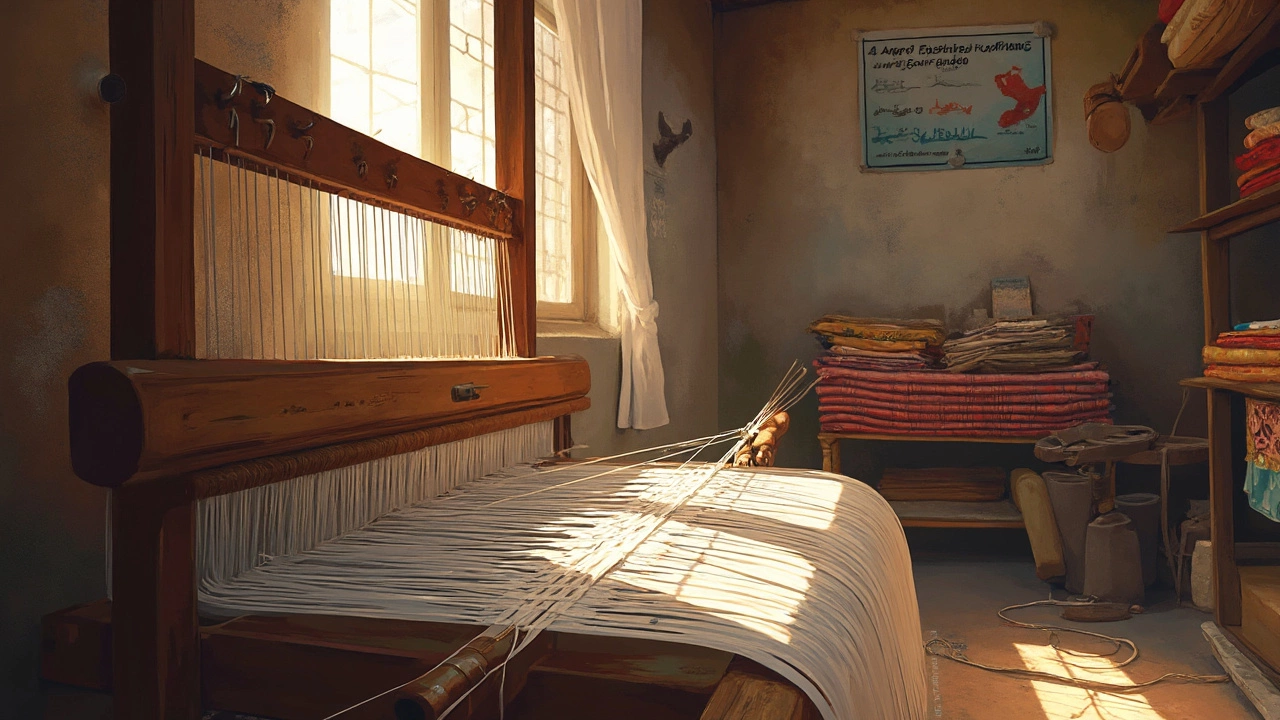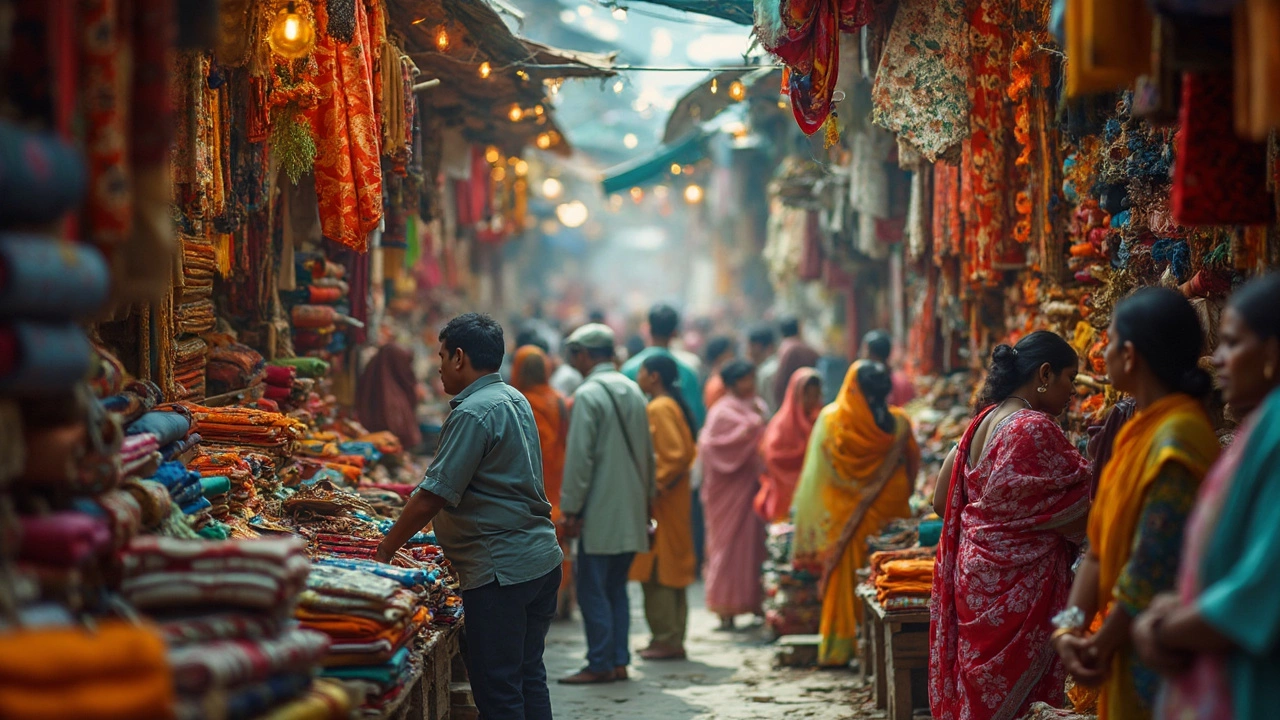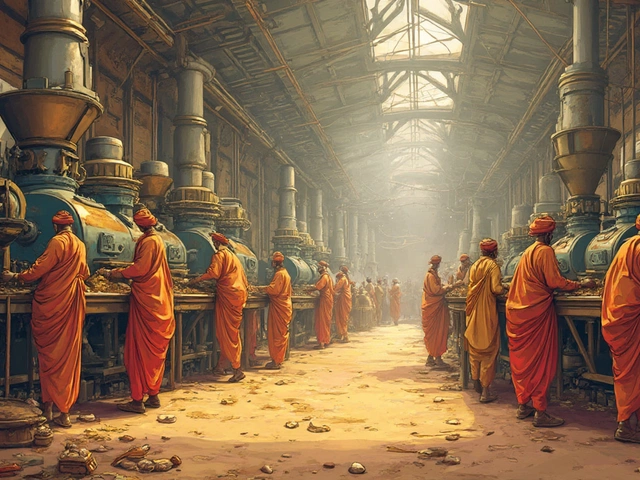Cotton is hands-down the king when it comes to fabric demand in India. Walk into any local market, ask a textile trader, or check garment sales—cotton tops the list every single time. There’s one big reason: India’s weather. Most of the country is warm or hot, so breathable cotton just feels better on your skin compared to synthetics or heavy fabrics. No wonder half the world’s handspun cotton gets used right here.
But that’s only part of the story. While traditional sarees, men’s kurta-pajamas, and kids' uniforms are still made largely from cotton, you’ll notice a shift when you look at urban wardrobes. Polyester is popping up everywhere too, especially with athletic and workwear. It’s cheaper, dries fast, and doesn’t shrink in the wash—big perks for Indian households always juggling laundry.
- Cotton’s Undeniable Lead
- Polyester’s Chase and Its Uses
- Regional Cloth Favorites
- Trends Shaping Cloth Demand
Cotton’s Undeniable Lead
Cotton sits at the top of the food chain in the Indian textile scene. There’s a simple reason for that: Indian weather is brutal for most heavyweight or synthetic stuff. Cotton breathes. It keeps you cool, soaks up sweat, and just feels good on your skin. It’s not just everyday folks who love it—most textile manufacturers India have built their business around cotton because the demand never really dips.
India isn’t just the world’s second-biggest cotton producer; it also spins and weaves a massive chunk of what it grows. You’ll find cotton used in everything from dhotis in Tamil Nadu to kurtas in Delhi. Even high-end fashion relies on native cotton like mulmul and khadi. It’s everywhere—bedsheets, simple T-shirts, denim, towels, even medical gauze stocked up in clinics.
The numbers back it up. Check this out:
| Category | India’s Share (%) | 2023 Volume (Million Bales) |
|---|---|---|
| World Cotton Production | 23% | 25 |
| Clothing Made from Cotton | Over 60% (domestic market) | — |
| Export Earnings from Cotton Textiles | 40% of total textile exports | — |
Here’s something to remember: when schools, police, or even official departments order uniforms, they pretty much always go for cotton or a cotton blend. Tailors in towns will recommend cotton for school kids or summer wear without a second thought. And since cotton is easy to dye, it fits the Indian appetite for every possible shade—think Holi colors, or the bright saris during Diwali.
Couple of quick tips for anyone dealing with cotton in India:
- Lightweight cotton like voile and mulmul is always a safe bet for hot months—from April to October, sales spike.
- Denim (made from cotton) isn’t just for jeans. Local brands are using it for shirts, bags, and even ethnic jackets.
- For exports, organic and “sustainable cotton” labels get higher prices abroad; Indian manufacturers have started cashing in on that.
Cotton’s not going anywhere. It works for daily wear, suits festivals, and even adapts to trends like “eco-friendly” or handloom. That’s what makes it the go-to cloth year after year.
Polyester’s Chase and Its Uses
Polyester is gaining serious ground in the Indian textile scene. Not too long ago, folks considered polyester as just cheap and for school uniforms, but things have changed. With brands pushing athleisure, quick-dry shirts, and durable workwear, polyester’s image is getting a definite upgrade. Textile manufacturers in India are hopping on this trend because polyester is easy to work with—plus, machines can churn out massive yards in a fraction of the time compared to natural fibers.
This shift isn’t just about fashion. The numbers back it up. According to the Ministry of Textiles, India produced about 2.4 million tons of polyester filament yarn in 2023 alone, and that’s growing every year. It’s now second only to cotton when you look at sheer volume. Urban buyers love polyester for its low price, easy wash, and the fact that you don’t have to iron it as much—nobody wants to stand over a hot iron in summer!
Here’s a quick look at why textile manufacturers India see polyester as such a winner:
- Easy maintenance: No special care needed—just wash and go.
- Fast drying: Dries quicker than cotton, which makes life easier during the monsoons.
- Affordable: Costs less than many natural fabrics, so it’s pocket-friendly for manufacturers and buyers.
- Durability: Stands up to rough use, so it’s perfect for uniforms, sportswear, and bags.
- Versatility: Can be blended with cotton, viscose, or even wool for different finishes.
Check out how polyester compares with cotton in raw numbers:
| Fabric Type | Annual Production in India (2023) | Key Uses |
|---|---|---|
| Cotton | 6.2 million tons | Sarees, shirts, kurtas, bed linens |
| Polyester | 2.4 million tons | T-shirts, sportswear, uniforms, backpacks, home textiles |
If you’re into exports, here’s something interesting: polyester products move faster internationally because they’re cheaper to ship and last longer in transit. That’s another reason why local mills and brands are ramping up production. Even in smaller towns, factory-made polyester school uniforms are now way more common than the old cotton ones. So, if you care about trends and demand, polyester isn’t just chasing cotton—it’s standing right next to it.

Regional Cloth Favorites
India’s love for fabric isn’t one-size-fits-all. Every region has its own favorites, shaped by history, weather, and even what crops grow nearby. If you look at South India, cotton barely gets a break; handloom cottons like Chettinad and Pochampally are everywhere, especially in summers. These sarees and lungis are light enough for the humid heat and have patterns locals instantly recognize.
Now, shift to Rajasthan or Gujarat, and you’ll spot people rocking vibrant bandhani and block-printed cottons, but silk pops up often too, especially for special events. No wedding up north is complete without Banarasi silk sarees from Varanasi or the fine Phulkari work from Punjab. Every family wants at least one of these stunners in their cupboard—proof that silk is right up there for festive or formal wear. In Assam, people go crazy for Muga silk, famous for its natural golden sheen and durability. Luckily, most of these traditional silks are still handwoven, supporting village weavers.
Even among everyday clothes, region decides the pick. For example, winter in Himachal or Kashmir means thick wool shawls and pashmina. Head to Kerala, and you’ll find that white-and-gold ‘kasavu’ cotton is still worn for major festivals. Eastern states, like West Bengal, are all about airy Jamdani cottons and the iconic Baluchari silk saree, often gifted at weddings.
For textile manufacturers India remains a land of micro-markets. If you’re eyeing real sales, it’s smart to tailor your lineup to the local crowd. One-size-fits-all rarely works—offer what matches the weather, the festivals, and local tastes, and you’ll get people hooked.
Trends Shaping Cloth Demand
The textile manufacturers India rely on are always tweaking their production according to new trends and demands. These trends aren’t just random—they reflect weather, fashion, tech, and even big world events. Here’s what’s actually driving the choices people make when buying cloth in India right now.
- Sustainability Push: There’s a huge buzz about eco-friendly fabrics. Organic cotton, bamboo fibers, and recycled polyester are starting to show up, especially in bigger cities like Bengaluru and Mumbai. Brands are slapping the ‘sustainable’ tag on products, and young shoppers are taking notice.
- Rise of Online Shopping: The last five years saw online textile sales explode. Now, more people want wrinkle-free, easy-care fabrics that look good even after being shipped across the country. Polyester blends and ready-to-wear cottons are favorites for this crowd.
- Fashion Influence: Bollywood celebrities and Instagram influencers often revive old styles (like Chikankari or Kalamkari), causing sudden spikes in demand for those fabrics. Some traditional cloths get hot overnight, but the classics like cotton remain steady.
- Export Game: A good chunk of India's fabric output ends up abroad, especially in the US and Europe. Since these markets want specific weaves and eco-labels, Indian mills are experimenting more with linen, modal, and organic blends.
- Weather and Season: Light cotton and voile see a jump during long summers, while the North favors thicker blends like wool-cotton from October to February. Retailers plan their yearly stock based on upcoming festivals and weather reports.
Check out this table showing the share of fabric types in India's overall textile demand for 2024:
| Cloth Type | Market Share (2024) |
|---|---|
| Cotton | 49% |
| Polyester/Blends | 35% |
| Silk | 7% |
| Linen & Modal | 5% |
| Others (including wool, bamboo, etc.) | 4% |
If you’re in textiles, watch these trends closely. Demand can change fast depending on cricket tournaments (jersey sales!), climate shifts, or viral fashions. Success in this industry is about reading the room and moving quickly.






